Imagine yourself on an open arid plain, 100 miles north of the equator. It is the height of the dry season. The sun beats down relentlessly and a steady wind swirls the fine red dirt in every direction. It smells hot and acrid: dust and dung. Scraggly acacia trees dot the landscape and groups of people and animals cluster as close as they can to the trunks seeking coolness in the lacy shade. Herders with intricately embroidered caps and long sticks are separating 250 cattle into groups according to size. They dash around steering the cattle by swatting their backs and rumps and stop the frequent dashes for freedom by waving their sticks and shouting. There is a constant racket of cows braying, people chattering and the wind whistling.
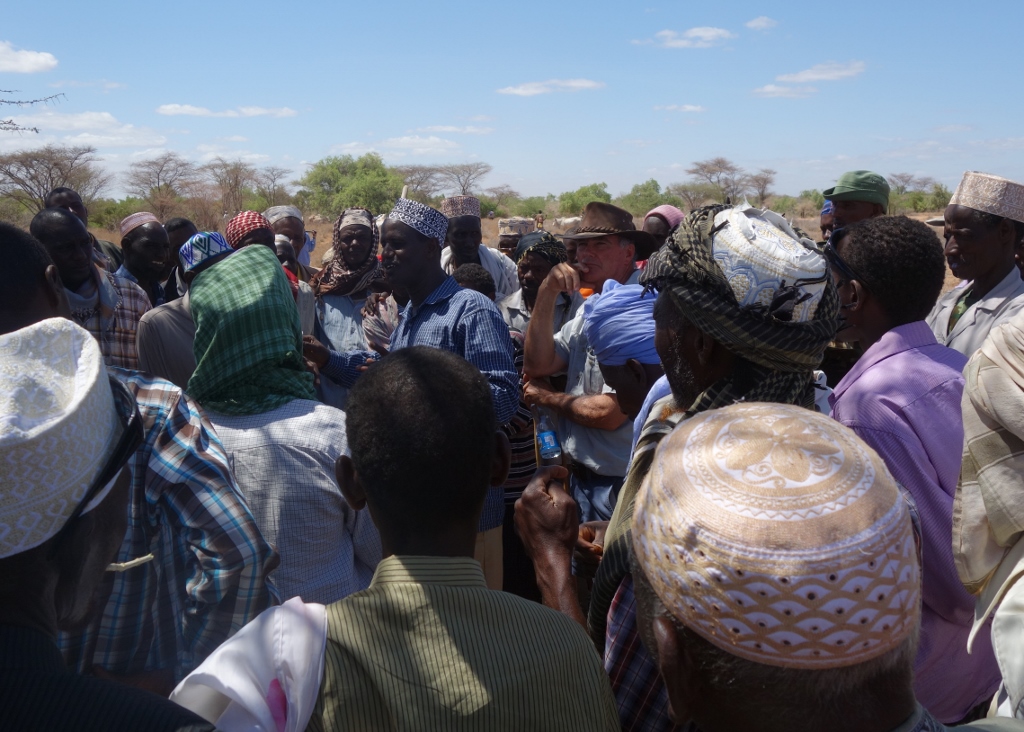
The opening crush of people under an acacia tree. I was soon called into the center of the circle to stand with the Chairman (in the blue and white cap) and Giles and nod knowingly.
At the heart of the action, three dozen hard-driving Borana traders jostle around a single buyer who stands, expressionless, his arms crossed across his chest, leather hat pulled low on his forehead, gaze directed at the cattle in front of him. This is a negotiating game and each side knows its business. Despite much hand waving, exasperated expressions, loud exchanges and repeated invasions of personal space, no one budges.
The standoff lasts 3 hours. No one eats or goes to the bathroom. They wait. Finally one person agrees to sell a medium sized cow for 30,000 KSH. The trader’s name is recorded, the price noted and the cow led into a temporary boma made of thorny acacia branches. Two hours later, 167 cattle are in the boma and NRT’s money is spent.

NRT’s 167 cattle receiving their red paint brand that will identify them as they walk 8 days, accompanied by armed guards through rough country to get to Lewa.
Time to fly home. By now the cross winds have picked up; it is going to be a bumpy ride. The children who have assembled to watch the takeoff are shooed from the field. You buckle up, wave, cross your fingers and off you go.
When you arrive at the other end, you want a beer.
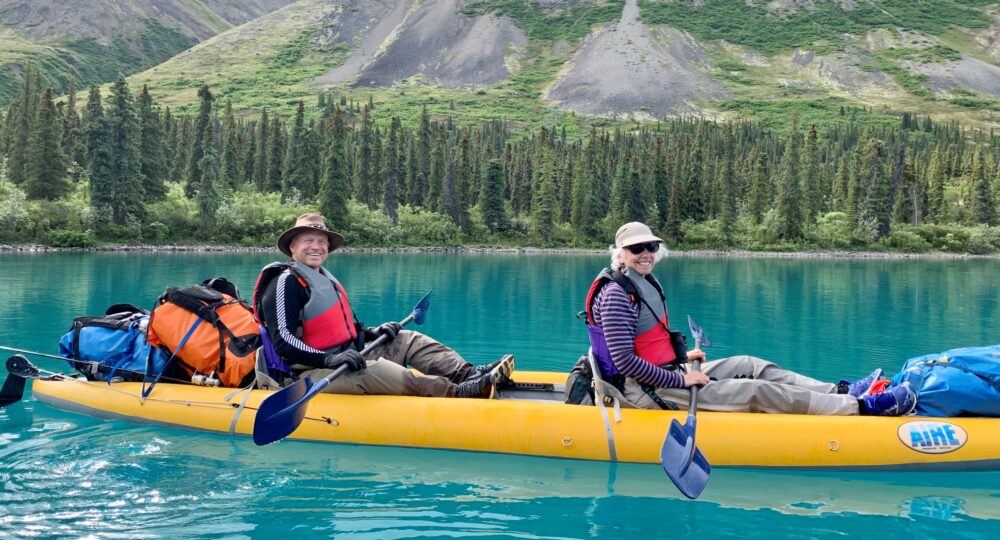
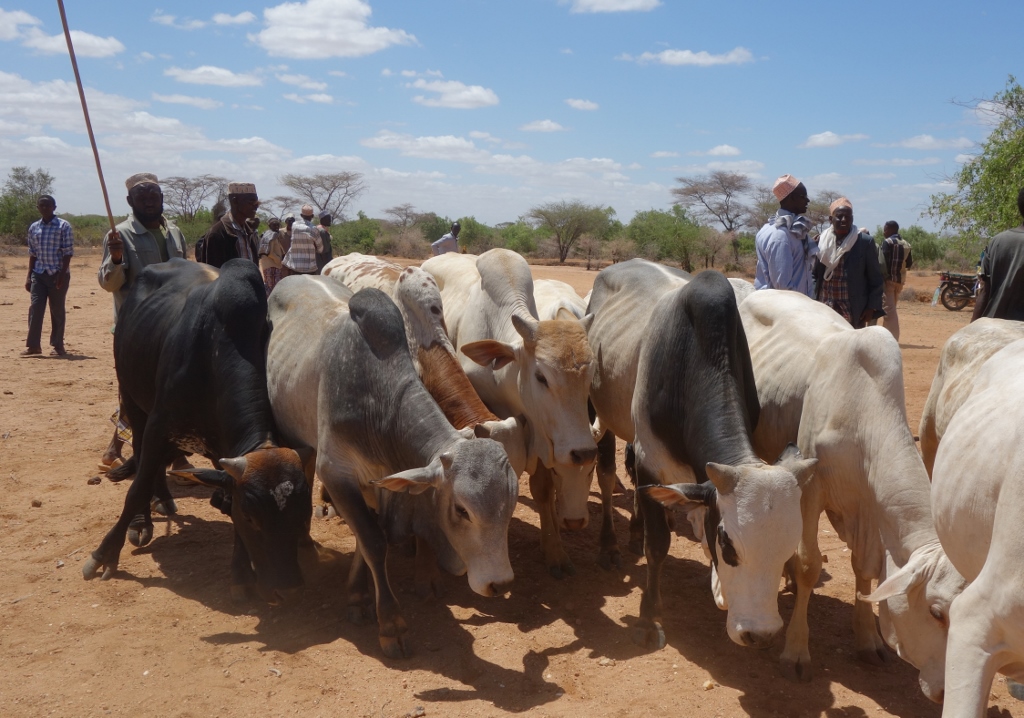
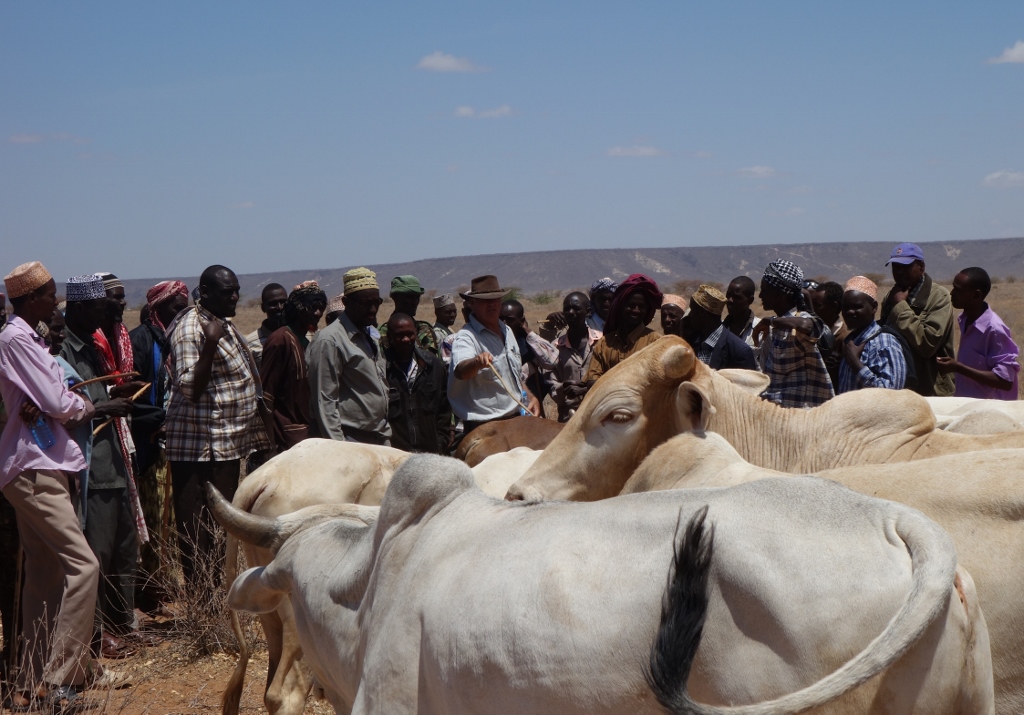
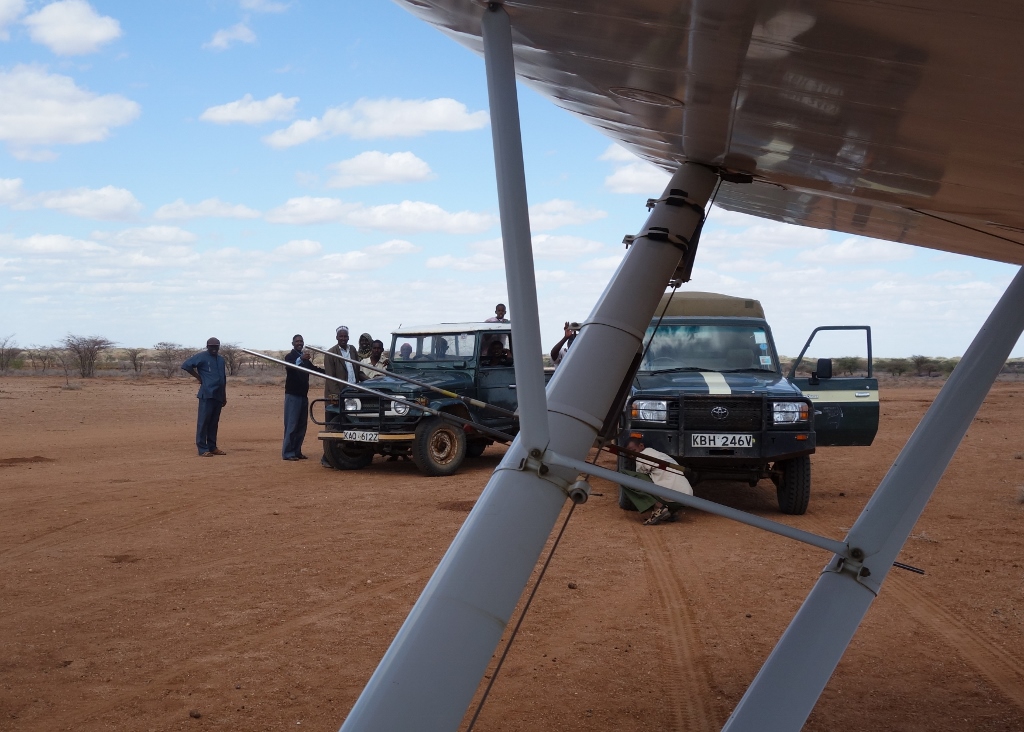
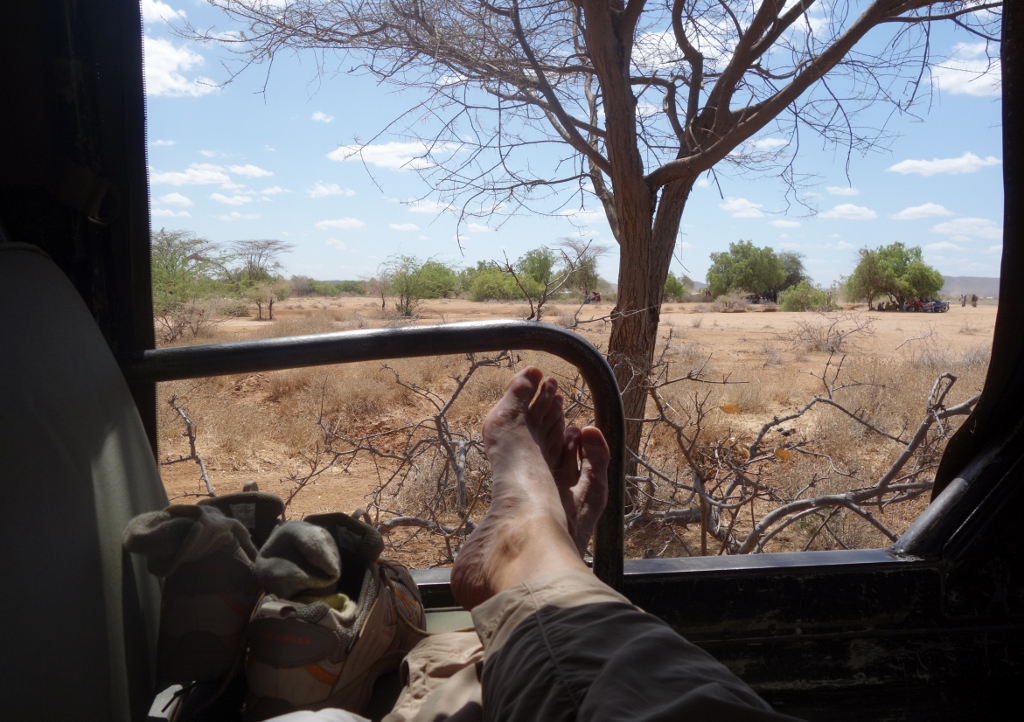
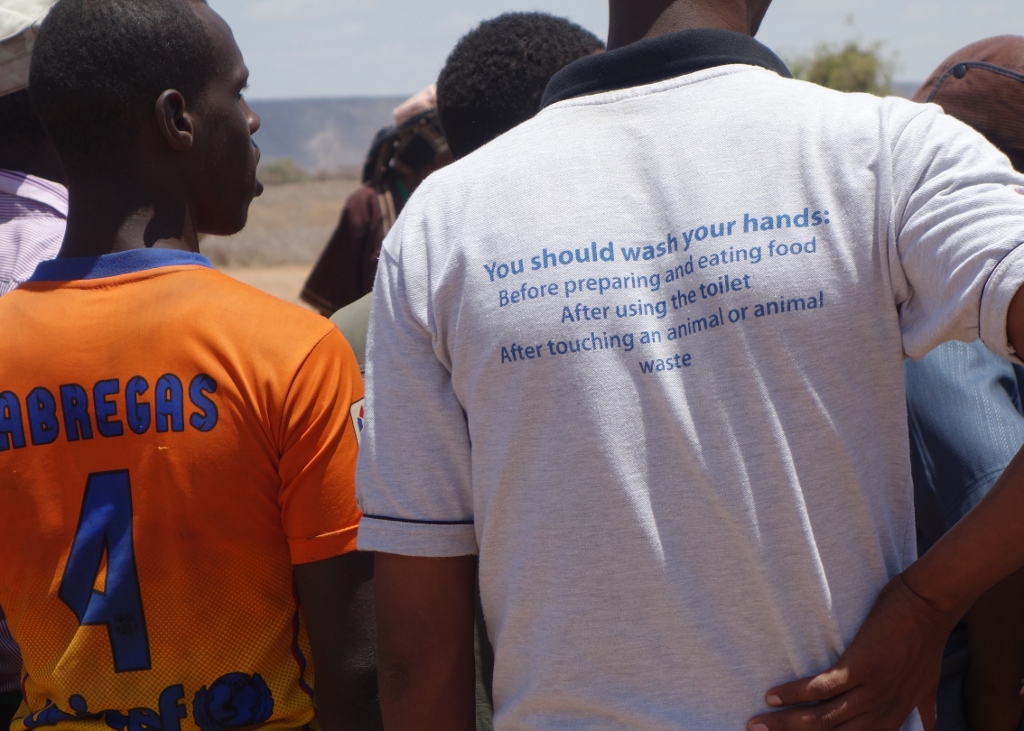
Cool story. So how much is 30,000 KSH worth in USD?
About $350. At the moment 85 KSH to the dollar.
So in other words, instead of sending a care package I could’ve just Bought a cow?
How much will that cow bring after NRT fattens it up?
Yes to Marion’s comment, which is why we’re not doing that any more. A fattened cow currently goes for between 45,000 and 48,000 KSH.
So fun to read all this.
Experiences of a life time!!!!!
Just what are these cows for? Are they communal for the village? Are they for Lewa?
Jan, the NRT buys them. They are herded to Lewa Conservancy where they are held in quarantine for 1-6 months then transferred to olpejeta, another conservancy, where they are fattened for 12 months. They are then sold for beef. It’s is a primary way the NRT makes money.
Small correction on John’s response. NRT’s cattle system is described in the blog post entitled “The Abattoir.” It is one of the ways NRT provides benefit to the conservancies. We don’t make money on it.